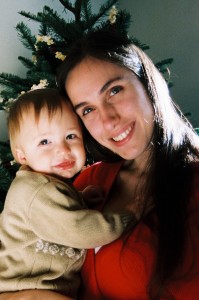Join with WAVE and MomsRising to tell your legislators that you want to see equal pay for equal work.
Just take 30 seconds to send a letter to your Senators with 1-click now:
http://action.momsrising.org/go/422?akid=2342.262765.EKgoNz&t=4
From MomsRising:
- Data recently released by the U.S. Census found that women who worked full-time, year round on average still made 23 cents less for every dollar earned by their male counterparts. (This marks no change from 2008’s wage gap and amounts to nearly $11,000 per year in lost earnings). And, the wage gap for women of color in 2009 was even more staggering than for women overall. When Black and Hispanic women work full-time, year round, they only make 62 and 53 cents, respectively, for every dollar their white, non-Hispanic male counterparts earn. [1]
- Last week, the Government Accountability Office (GAO) released a report which found that mothers who are working in management positions earned 79 cents for every dollar earned by fathers who are managers, unchanged from 2000. Further, in 12 out of the 13 major industries, fathers were more likely than mothers to be managers. [2]
- Also last week, The Wall Street Journal reported: “…the pay gap could easily create a retirement savings shortfall of hundreds of thousands of dollars. Consider this example of a female and male manager, both 50 years old and looking to retire at 65. She makes $81,000, he makes $100,000 in 2010, and each gets a standard 2% annual raise. Not only will he end up earning more than $350,000 than she did over those 15 years, he’ll also end up saving 23% more for retirement– even though both contributed 10% of their income to their retirement funds each year and got a 5% average annual rate of return.” [3]
- Earlier this week, Bloomberg News reported: “Women managers in finance, a group that includes bank tellers as well as executives, earned 63.9 cents for every dollar of income men earned in 2000, based on median salaries, according to Government Accountability Office statistics analyzed by Bloomberg. In 2007, the last year for which data are available, the figure was 58.8 cents. The 41-cent gap was the biggest in any of 13 industries surveyed by the GAO, and only two others had a widening disparity.” [4]
Sadly, this unequal pay is a contributing factor to why now a full 1 in 7 people in the U.S. live in poverty, [5] as well as to the fact that nearly 1 in 4 kids in our nation are experiencing food scarcity due to family economic limitations. [6]
In this tough economy, more and more families are counting on women’s earnings. Unfair pay practices make things even harder. The Paycheck Fairness Act would deter wage discrimination by closing loopholes in the Equal Pay Act and barring retaliation against workers who disclose their wages to coworkers.
[1] U.S. Census Bureau and NWLC: “State Wage Gap Data Show Little Or No Improvement from 2008”
[3] The Wall Street Journal: “For Women, Pay Gap Means Retirement Shortfall”
[4] Bloomberg News: “Wall Street Says Women Worth Less as Disparity Over Pay Widens”
[5] U.S. Census Bureau: “Income, Poverty, Health Insurance Coverage in the United States: 2009”
[6] The Washington Post: “America’s economic pain brings hunger pangs”
MomsRising is also asking the question:
Have you ever experienced wage or hiring discrimination? We’re pulling together stories of MomsRising members across the nation to share with U.S. Senators. Share your story here (and feel free to share anonymously): http://action.momsrising.org/go/423?akid=2342.262765.EKgoNz&t=8
WAVE wants to hear too. If you write something to submit to MomsRising, share it with us here too. How has wage or hiring discrimination affected you as a Mormon woman?

 Jenne Alderks, M.Ed., is the stay at home mother of two, a convert of eight years to the Church of Jesus Christ of Latter-day Saints, and serves as a ward missionary in Seattle, WA. She is Project Coordinator of Solace For Mothers, a non-profit organization providing support to mothers who have been traumatized by their childbearing experiences. Jenne also is an advocate for mother friendly maternity care, sustainable living and family friendly public policy.
Jenne Alderks, M.Ed., is the stay at home mother of two, a convert of eight years to the Church of Jesus Christ of Latter-day Saints, and serves as a ward missionary in Seattle, WA. She is Project Coordinator of Solace For Mothers, a non-profit organization providing support to mothers who have been traumatized by their childbearing experiences. Jenne also is an advocate for mother friendly maternity care, sustainable living and family friendly public policy.
